UK: Greater Spurge Hawkmoth; Mediterranean Hawkmoth, F: Sphinx Nicéa; Sphinx de Nice; Sphinx de l'Esule, D: Riesenwolfsmilchschwärmer; Großer Wolfsmilchschwärmer, RUS: Nitstskii Brazhnik, H: görög szender, E: esfinge mediterranea, FIN: Välimerenkiitäjä, HR: sredozemni ljiljak.
Deilephila nicaea var. orientalis Austaut, 1905, Ent. Z., Frankf. a. M. 18: 143.Type locality: Crimea [Ukraine].
(Taxonomic note. Since the Pleistocene, this formally more widespread subspecies appears to have been progressively absorbed into the eastward and northward expanding populations of subsp. nicaea (de Prunner, 1798) and subsp. sheljuzkoi (Dublitzky, 1928), respectively. This may explain the occurrence of 'orientalis-like' individuals in northern Iran and the Caucasus.)
Holarctic; western Palaearctic region. Pleistocene refuge: Monocentric -- Caspian refuge (which includes the Crimea).
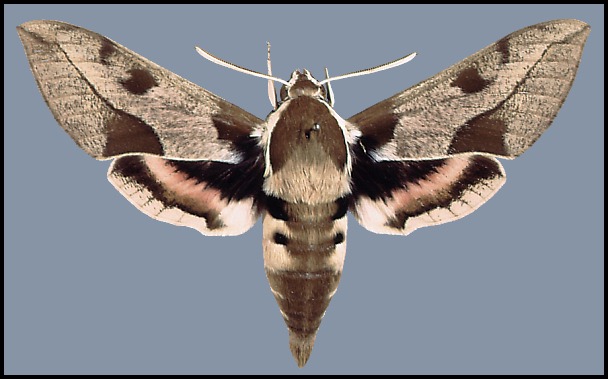
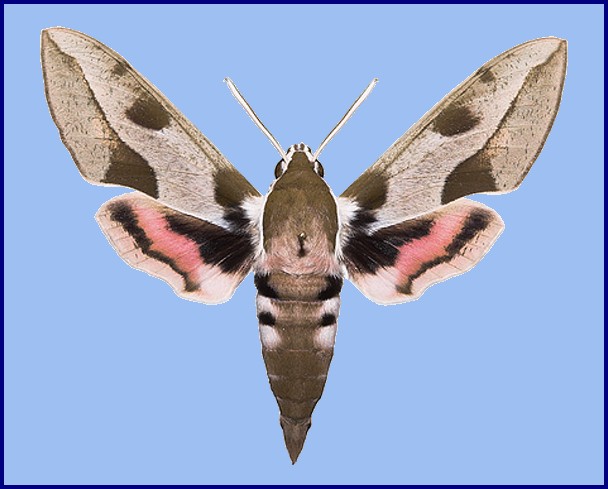
Wingspan: 90--100mm. Immediately distinguished from other subspecies by the heavy, dark blotching on the wings; also less variable in colour and pattern.
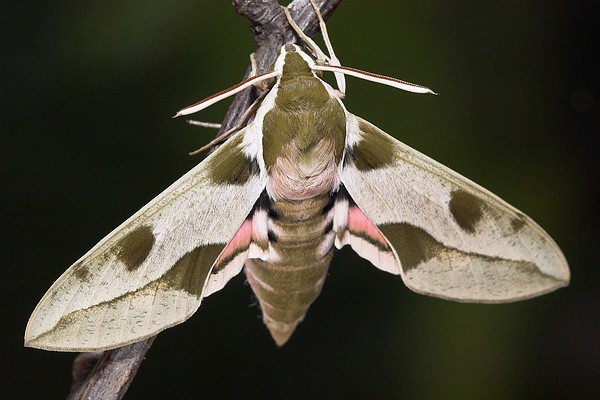
Occurs on sunny, dry, stony slopes of hills.
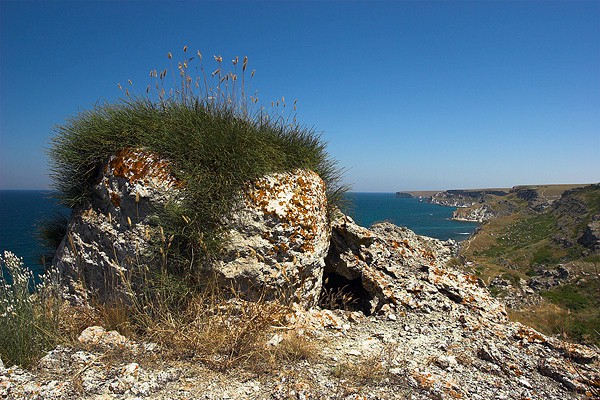
Univoltine; June/July, June in the Abrau Peninsula, NW Transcaucasia (Poltavsky, pers. comm. 2003).
OVUM: Very similar in size (1.6 x 1.4mm) and shape to that of Smerinthus ocellatus (Linnaeus, 1758), spherical and smooth; pale shiny green. The coloration changes to green and gold prior to hatching.
LARVA: Full-fed, 100--120mm. Polymorphic: pale grey to black.
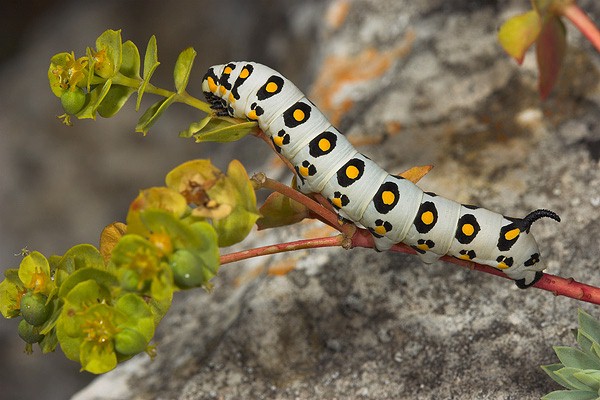
On hatching, the larva is 5mm long and a rich canary-yellow in colour, with a brownish black tail horn. With feeding, the yellow coloration is soon replaced by apple-green. This primary colour persists into the second instar, during which longitudinal rows of black dots appear; the horn and ventral surface also become black. In the third instar the final coloration of most individuals develops: pale grey with dorso-lateral and ventro-lateral rows of black-ringed yellow or red eye-spots. The horn remains black and there is no red dorsal line. However, some larvae become totally black with red eye-spots and buff lateral patches; the amount of black pigmentation is very variable.
At first, the young larva rests along the midrib on the underside of a leaf, but growth is rapid and the large larva soon rests on the stem, where it is difficult to spot.
Occurs mainly during July and August, although a few may still be found feeding in September.
Hostplants. Euphorbia petrophila and Euphorbia seguierana in the Crimea (Efetov & Budashkin, 1990).
PUPA: 45--50mm. Yellowish brown with fine black outlines to the legs and antennae. Enclosed in a loosely spun yellow cocoon amongst dead leaves and litter. The overwintering stage.
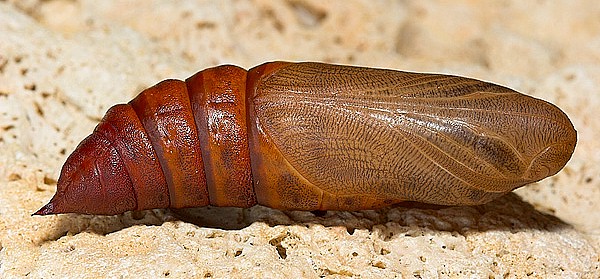
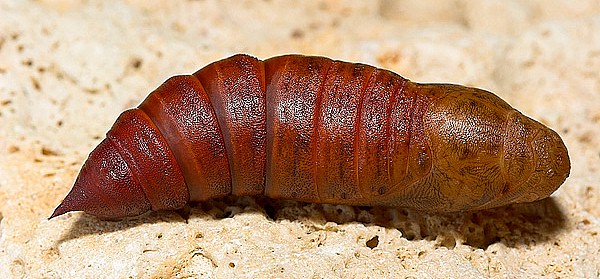
None recorded.
The southern and western Crimean Peninsula (Ukraine) and western Transcaucasia (Abrau Peninsula to the western Republic of Georgia).
Extra-limital range. None.
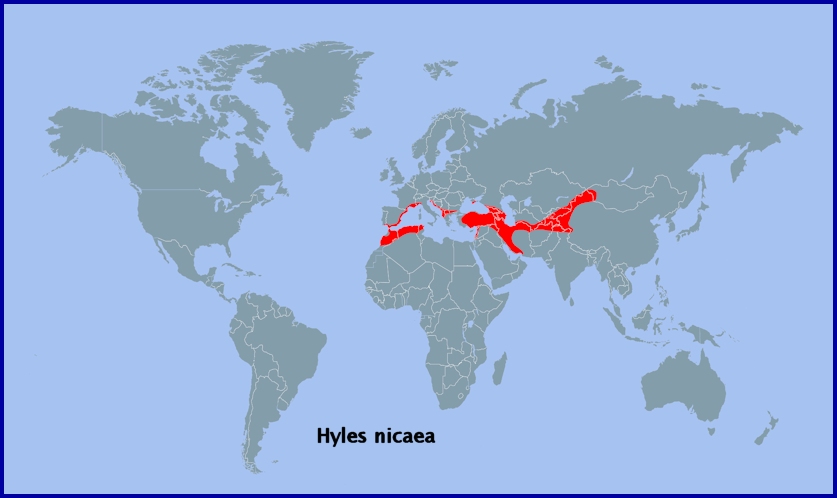
The Atlas mountains of northwest Africa as subsp. castissima (Austaut, 1883). From southern Portugal and Spain across southern Europe to western Turkey (including the Balearic Islands and south-western Bulgaria) as subsp. nicaea. From Lebanon, northern Israel and western Jordan across southern and eastern Turkey, northern Iraq, the northeastern Caucasus, southern Dagestan (Russia), the southern Republic of Georgia, Armenia, Azerbaijan, Iran, Turkmenistan, Uzbekistan, eastern and southern Kazakhstan, Kyrgyzstan, the Pamirs, northern Afghanistan, western Mongolia and western Xinjiang Province, China as subsp. sheljuzkoi (Dublitzky, 1928). Northeastern Afghanistan (Ebert, 1969), northern Pakistan (Rafi et al., 2014), north-west India (Kashmir) and China (Xizang Province/Tibet) as subsp. lathyrus (Walker, 1856).
 Return to species list
Return to species list